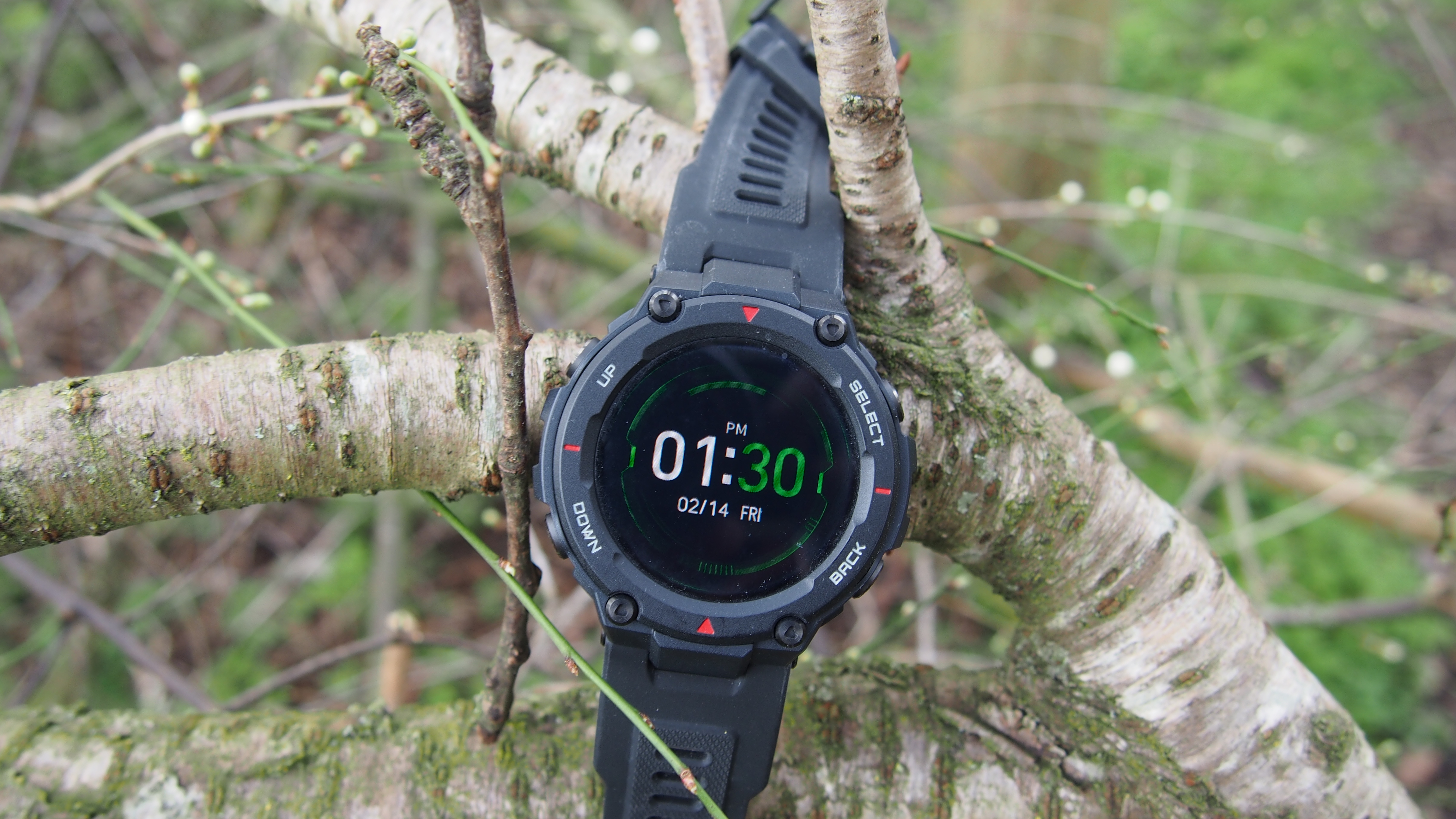Why you can trust TechRadar
Fitness
- Includes reliable GPS and heart rate monitoring
- Sleep tracking also seemed accurate
- 14 different sport modes
The Amazfit T-Rex has pretty much everything you’d expect to find on a sports watch. There’s built-in GPS, a heart rate monitor, the sensors to track activities indoors along with additional outdoor metrics, and there’s swim tracking support too.
There are 14 sport modes in total and that includes core sports like running, cycling, pool swimming, and indoor cycling. For outdoor lovers, it also has dedicated modes for the likes of hiking, skiing, open water swimming, and tracking triathlons.
Accessing these modes is done by pressing the top right button on the watch and then swiping on the touchscreen to find the sport you want to track.
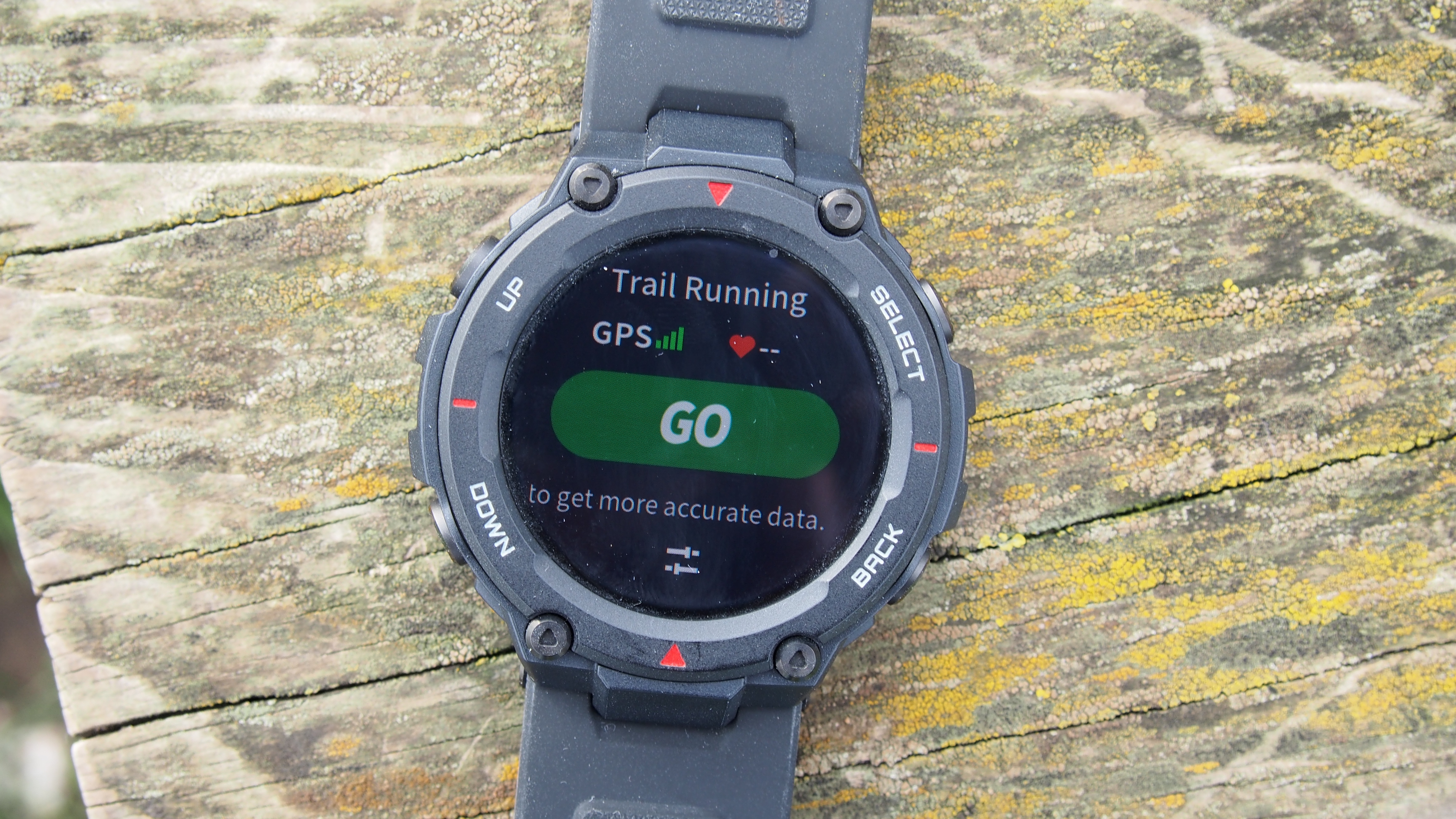
All profiles offer some basic settings, letting you set workout goals based on things like mileage, time or calories. You can also set up alerts for aspects like hitting certain distances or a heart rate zone. Plus you can turn on real-time graphs based on metrics like pace and heart rate.
As a sports watch, it holds up surprisingly well. GPS pick-up time for outdoor activities was about the same as Garmin and Suunto sports watches we tested it against. Though there was one occasion where the GPS signal dropped out for a few seconds during a workout. Notably there's also no on-watch mapping or navigation.
The data itself was easy to absorb and on the whole reliable. During a run for instance, it gives you a nice summary of your activity so far when you’ve hit another mile or kilometer. While it’s a bit fiddly to review data on the watch, there’s a much nicer breakdown waiting for you inside the companion phone app.
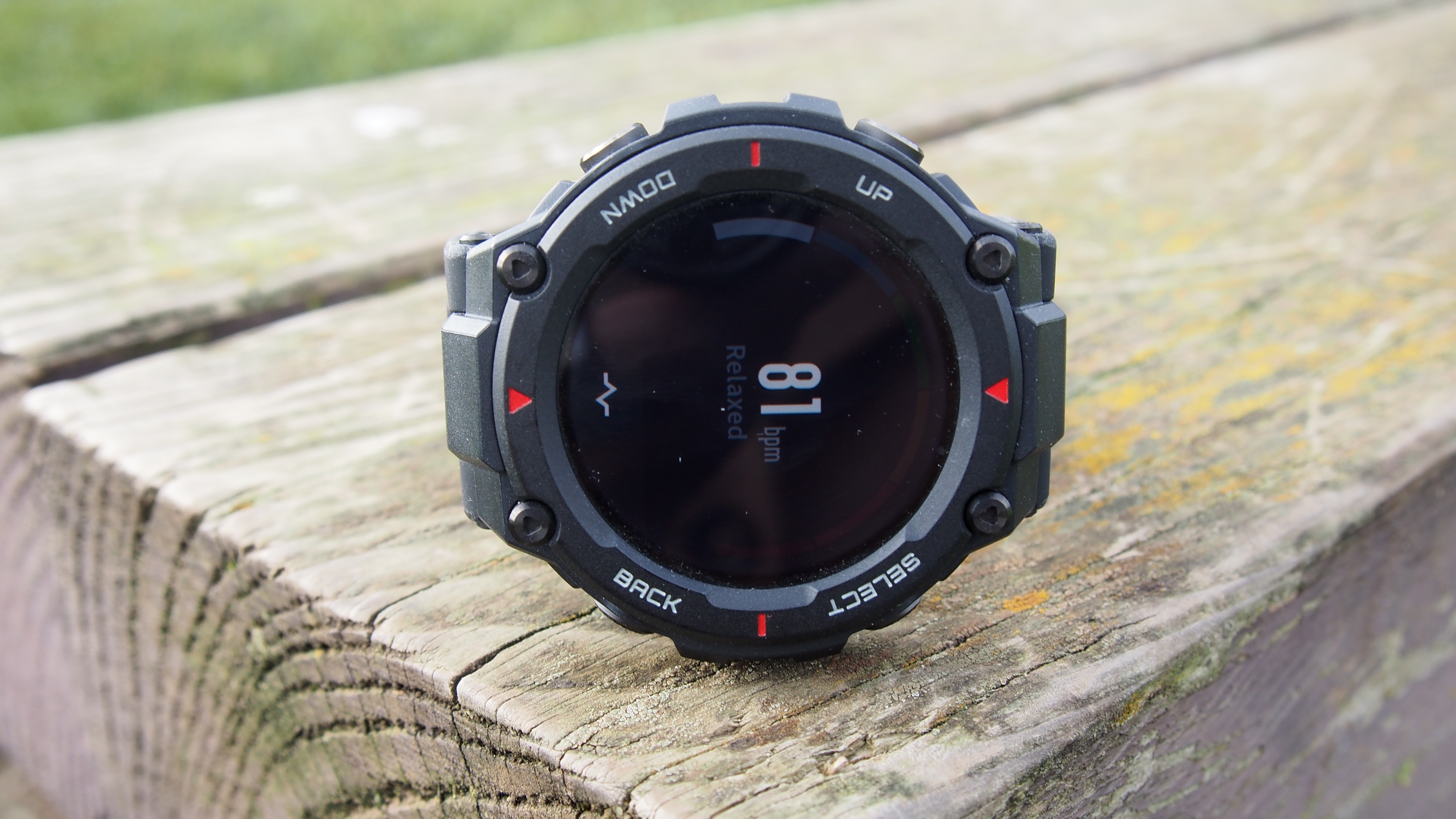
There is an optical heart rate monitor here too that’s used to offer on the spot measurements, showing your resting heart rate to give you an insight into your current state of fitness.
It’s also put to use for measuring effort levels during workouts. It’s fair to say performance puts it within the category of most other wrist-based heart rate sensors, which are generally good for most activities, but falter for high intensity workouts like interval running and cycling sessions.
Compared to a heart rate monitor chest strap, the T-Rex tended to be slow to pick up elevated and dropping heart rate, and often posted higher readings. Those readings weren’t erratically high, but noticeable enough that the chest strap felt more reliable.
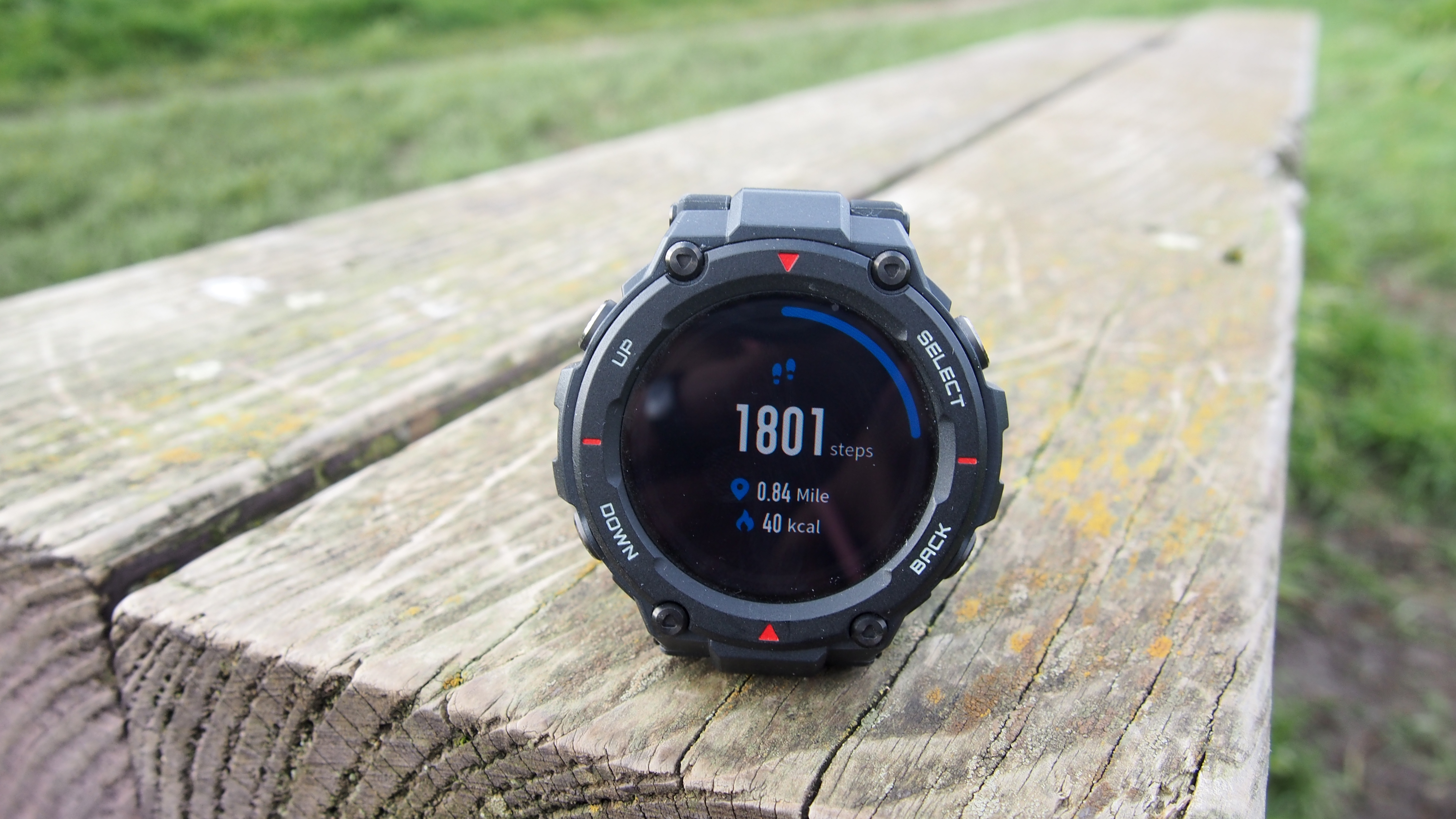
The Amazfit T-Rex also doubles up as a fitness tracker, though those features definitely play second fiddle to its sports tracking abilities. There’s a dedicated watch screen to view tracker staples like step counts, which was generally within 100-200 steps of the Garmin fitness tracker we tested it against.
It also monitors sleep, automatically giving you a sleep score, a breakdown of sleep, and sleep quality insights, which weren’t ground-breaking in terms of what they suggested, but it was nice to see them nonetheless.
From an accuracy point of view, the Amazfit T-Rex tended to offer data very close to what we measured with the Withings Sleep bed monitor. It regularly identified the right sleep duration, time taken to fall asleep, and also offered similar sleep scores.
Software
- Runs Huami's own operating system
- Smartwatch features are basic
- Companion apps is useful but cluttered
Amazfit uses its own operating system to run the software show and it feels very like the Tizen OS used by Samsung in its appearance. From the main watch screen you’re a swipe away from your notifications, checking your step counts, and the settings menu. It keeps things basic, there’s no steep learning curve and it’s easy to get to grips with.
Smartwatch features are kept to a minimum. Notification support works for both Android and iPhones, though it’s very basic, as you can see the notifications for apps like WhatsApp or calendar appointments, but there's no way to act on them.
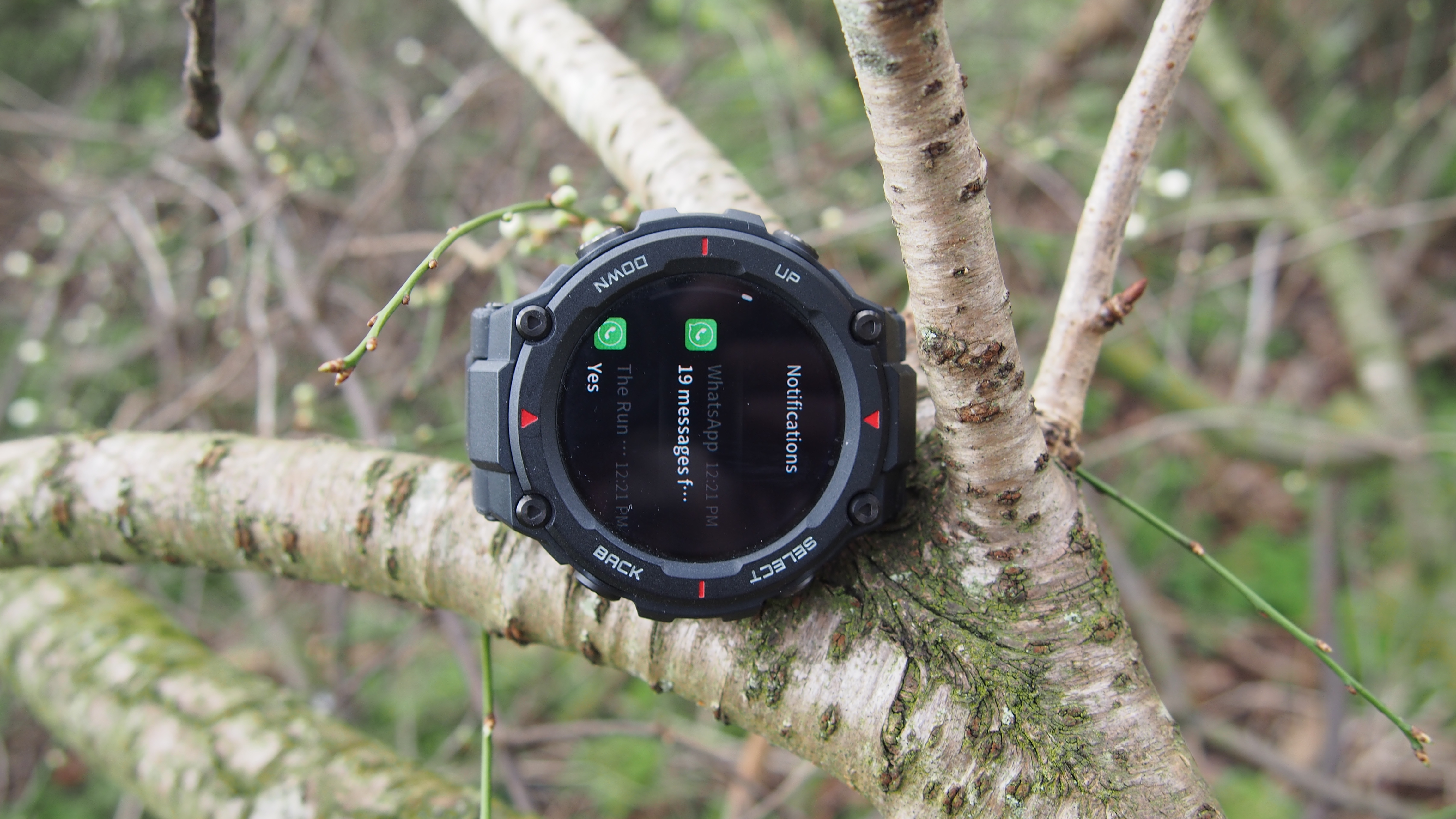
There’s also no music player, payment support or app support to speak of here. Though that’s hardly surprising given the price.
If you want to do some tinkering or see what else the T-Rex is capable of, you’ll need to head over to the Amazfit companion phone app. It’s here that you can do things like change watch faces, set up notification support, and check in on health and fitness data that you can’t view on the watch, such as sleep data and resting heart rate measurements.
It’s not the best looking of apps. It offers a place to drill deeper into data, track activities from your phone, and change your watch settings, but it could definitely do with better organizing and separating of those elements.
It would also be nice if something like changing watch faces and setting alarms could be done on the Amazfit T-Rex itself. While not a deal-breaker, we were very disappointed not to see a single dinosaur-related watch face here either.
If you want to steer clear of the app entirely and you’re only interested in poring over your sports data, the app does let you connect to Strava too.
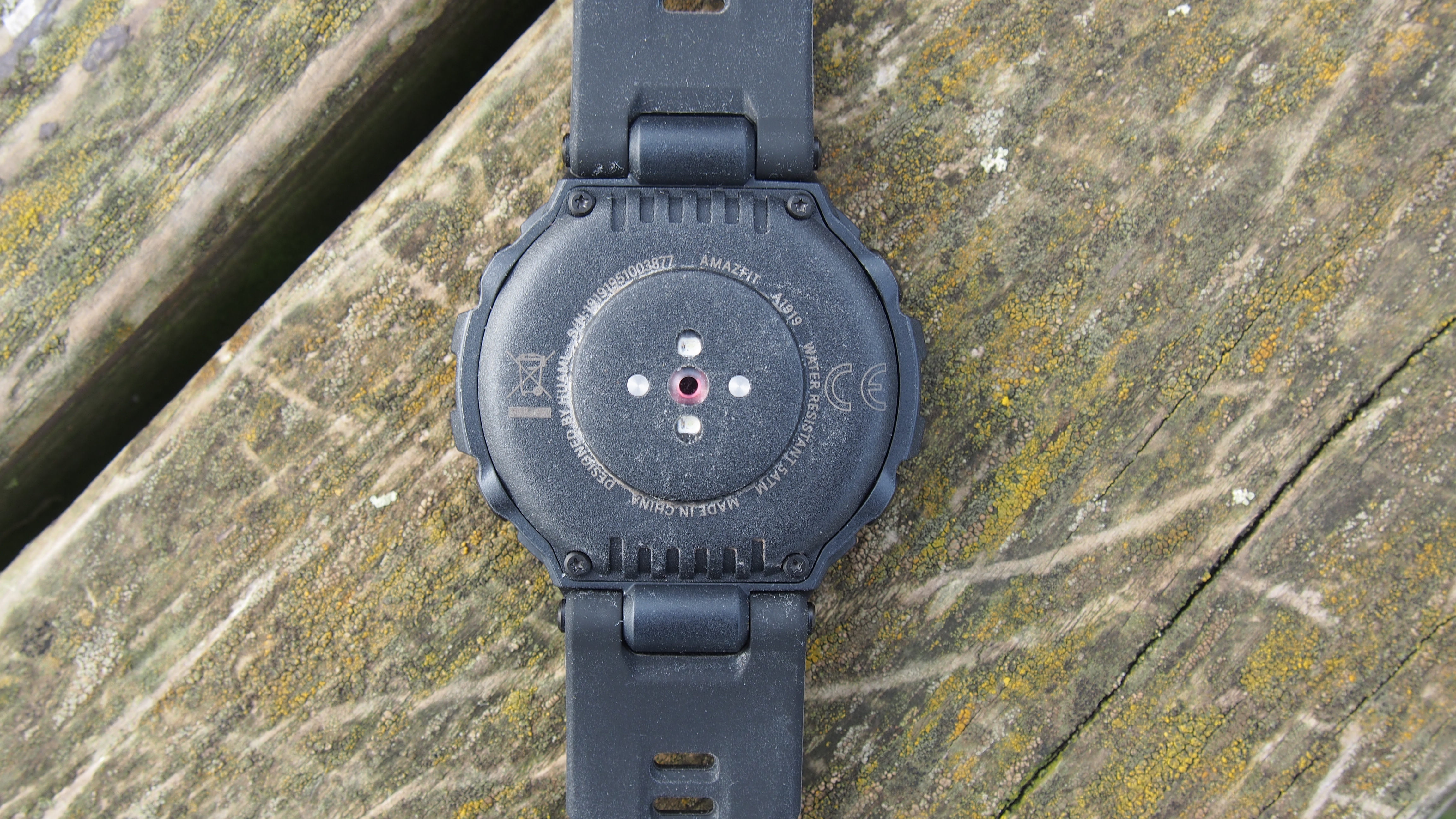
Battery life
- Lasts up to 20 days with all features active
- If you use a lot of GPS that drops to more like a week
Huami has made offering big battery life a big deal and it’s no different with the T-Rex. The company has also broken down very precisely how you can achieve that great staying power.
There’s a 390mAh capacity battery that should deliver 20 days of life in what Huami calls ‘Daily’ mode. That’s when heart rate monitoring is set to always on, you’re tracking sleep, pushing 150 messages to the screen daily, raising your wrist 30 times to wake the screen each day, and, using the GPS for 13 minutes a day.
In ‘Basic’ watch mode, which means not being connected to your phone via Bluetooth, you can expect 66 days. When you’re continuously using GPS to track activities, it should manage 20 hours.
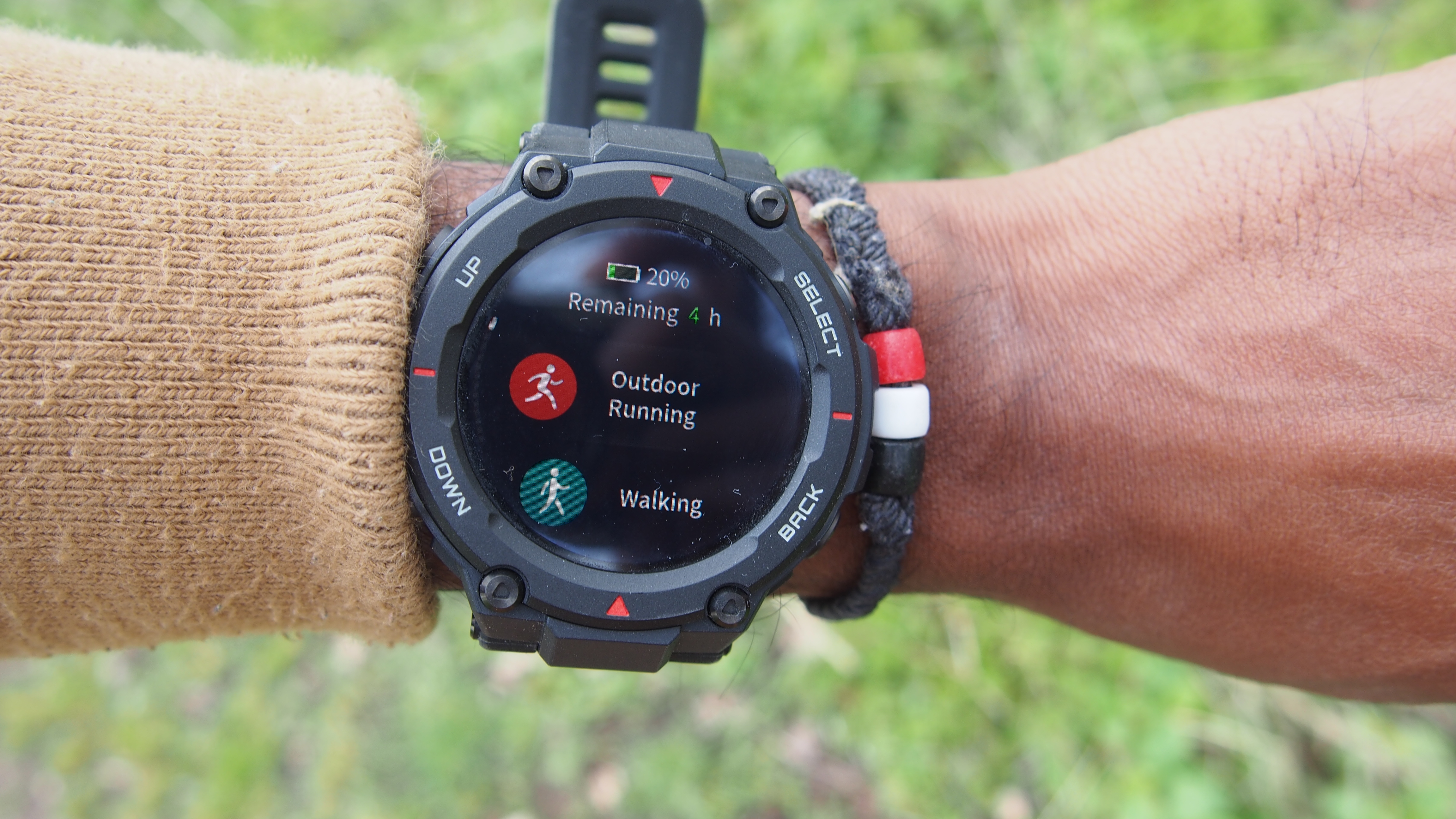
What we found day-to-day was that when not using sports tracking, battery drop-off tended to be around 10% a day. Tracking a 30-minute run knocked the battery by about 10%, and a 30-minute swim dented the battery by about the same.
It’s clear you’re definitely getting more than just a handful of days, but getting those 20 days with regular use of GPS-based sports tracking sounds a bit ambitious. You should comfortably getting a week or more unless you're a very heavy user, but you’ll need to be more sparing with some of the power-sapping features to get 20 days based on our time with it.
When you do need to power back up, there’s a proprietary charging cable that magnetically clips onto the back of the Amazfit T-Rex. It holds a good connection with the watch and will charge from 0%-100% in about two hours. So it’s not the speediest.
Current page: Fitness, software and battery life
Prev Page Introduction, design and display Next Page VerdictMichael is a freelance journalist who has covered consumer technology for over a decade and specializes in wearable and fitness tech. Previously editor of Wareable, he also co-ran the features and reviews sections of T3, and has a long list of bylines in the world of consumer tech sites.
With a focus on fitness trackers, headphones, running wearables, phones, and tablet, he has written for numerous publications including Wired UK, GQ, Men's Fitness, BBC Science Focus, Metro and Stuff, and has appeared on the BBC Travel Show. Michael is a keen swimmer, a runner with a number of marathons under his belt, and is also the co-founder of YouTube channel The Run Testers.
